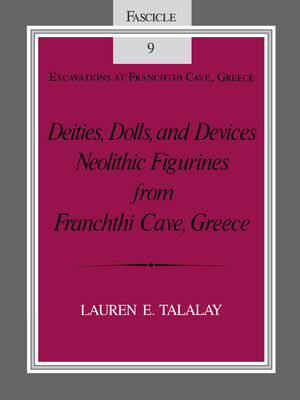Deities, Dolls, and Devices
ebook ∣ Neolithic Figurines From Franchthi Cave, Greece · Excavations at Franchthi Cave, Greece
By Lauren E. Talalay

Sign up to save your library
With an OverDrive account, you can save your favorite libraries for at-a-glance information about availability. Find out more about OverDrive accounts.
Find this title in Libby, the library reading app by OverDrive.



Search for a digital library with this title
Title found at these libraries:
| Library Name | Distance |
|---|---|
| Loading... |
A report on the prehistoric ceramic figurines recovered from the Franchthi Cave in Greece.
Talalay reports on a small body of figurines (twenty-four figurines and twenty-one fragments) recovered during excavations at Franchthi Cave and at the nearby open-air settlement along the present shoreline. She also reexamines the theoretical and methodological foundations of scholarship in the field of figurine studies. A thorough and pathfinding study of the most important body of figurines from southern Greece, this book will be especially valuable to specialists in prehistoric Greece and to all scholars interested in early representations of the human figure in prehistoric art and in the significance of these representations to the members of early human communities. The book also makes a contribution to the growing body of literature on gender in early societies with a critical evaluation of the uses of evidence in addressing gender issues.
Talalay reports on a small body of figurines (twenty-four figurines and twenty-one fragments) recovered during excavations at Franchthi Cave and at the nearby open-air settlement along the present shoreline. She also reexamines the theoretical and methodological foundations of scholarship in the field of figurine studies. A thorough and pathfinding study of the most important body of figurines from southern Greece, this book will be especially valuable to specialists in prehistoric Greece and to all scholars interested in early representations of the human figure in prehistoric art and in the significance of these representations to the members of early human communities. The book also makes a contribution to the growing body of literature on gender in early societies with a critical evaluation of the uses of evidence in addressing gender issues.







